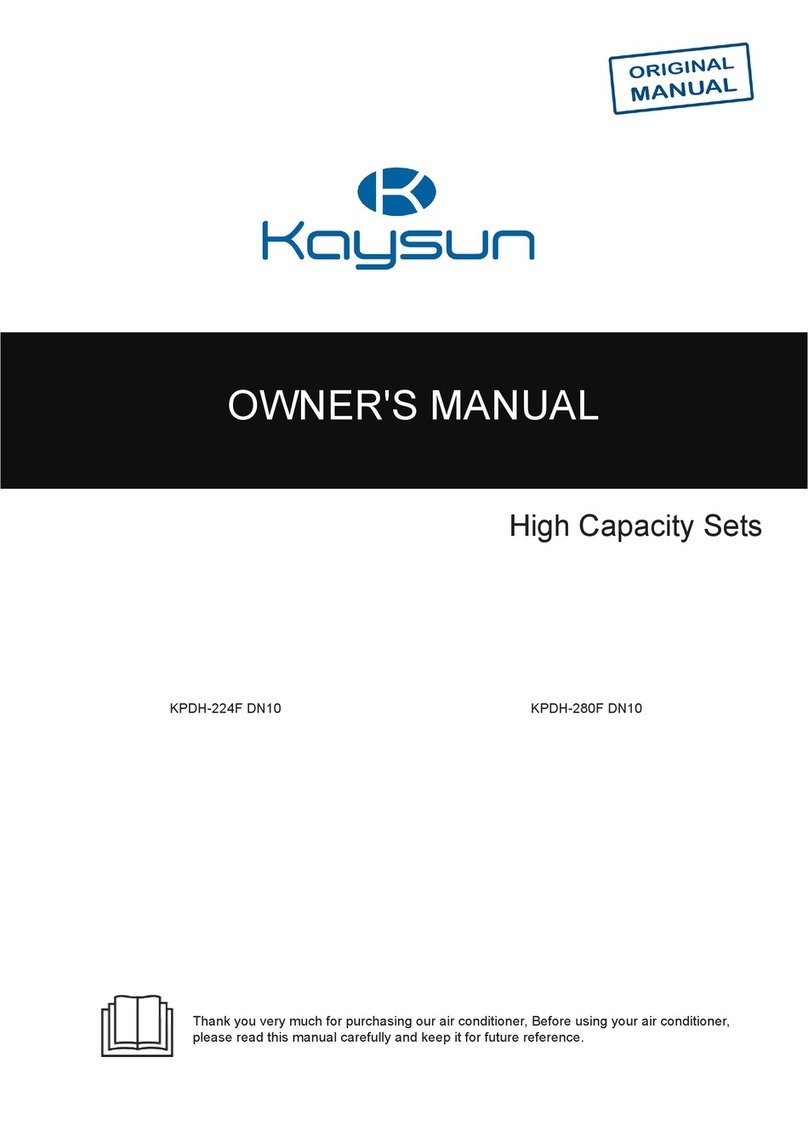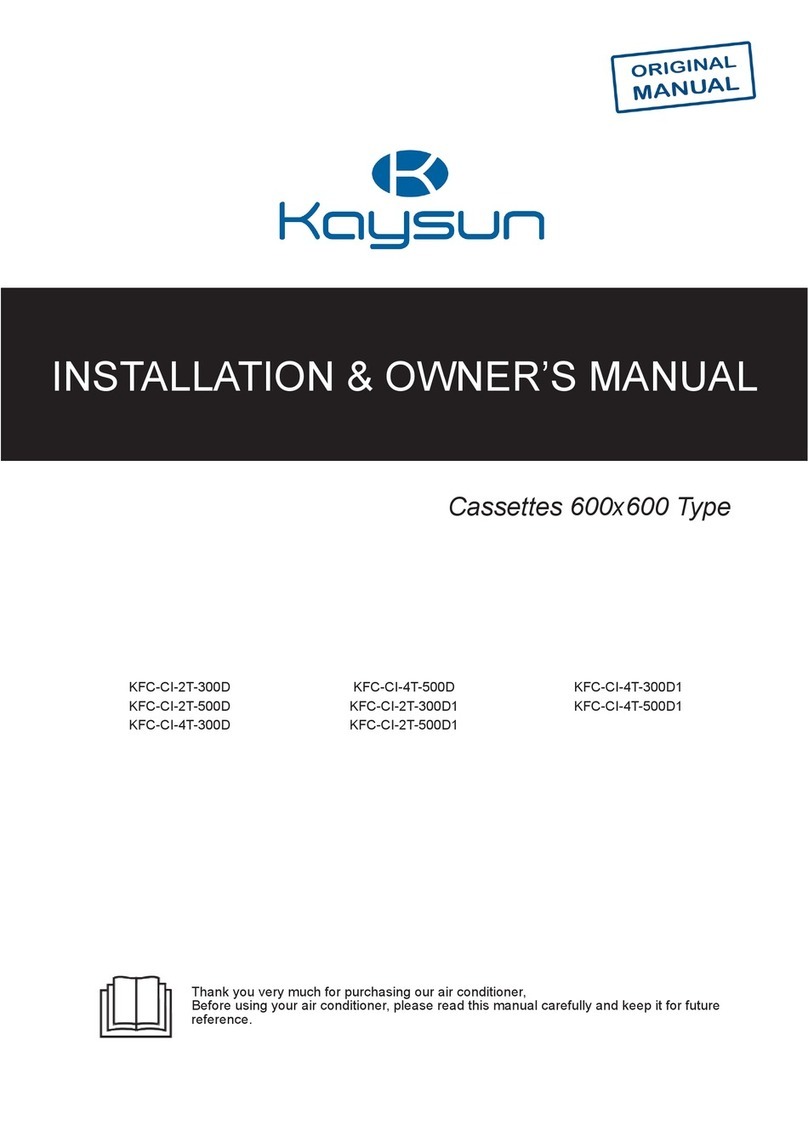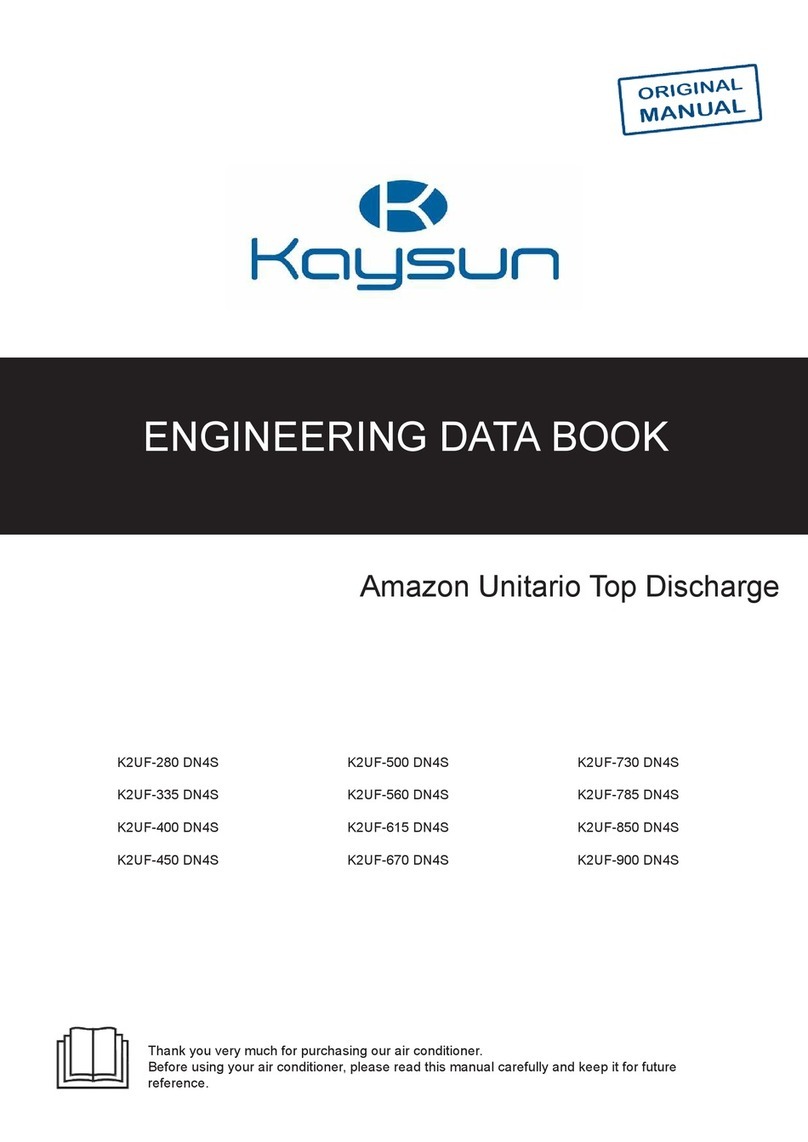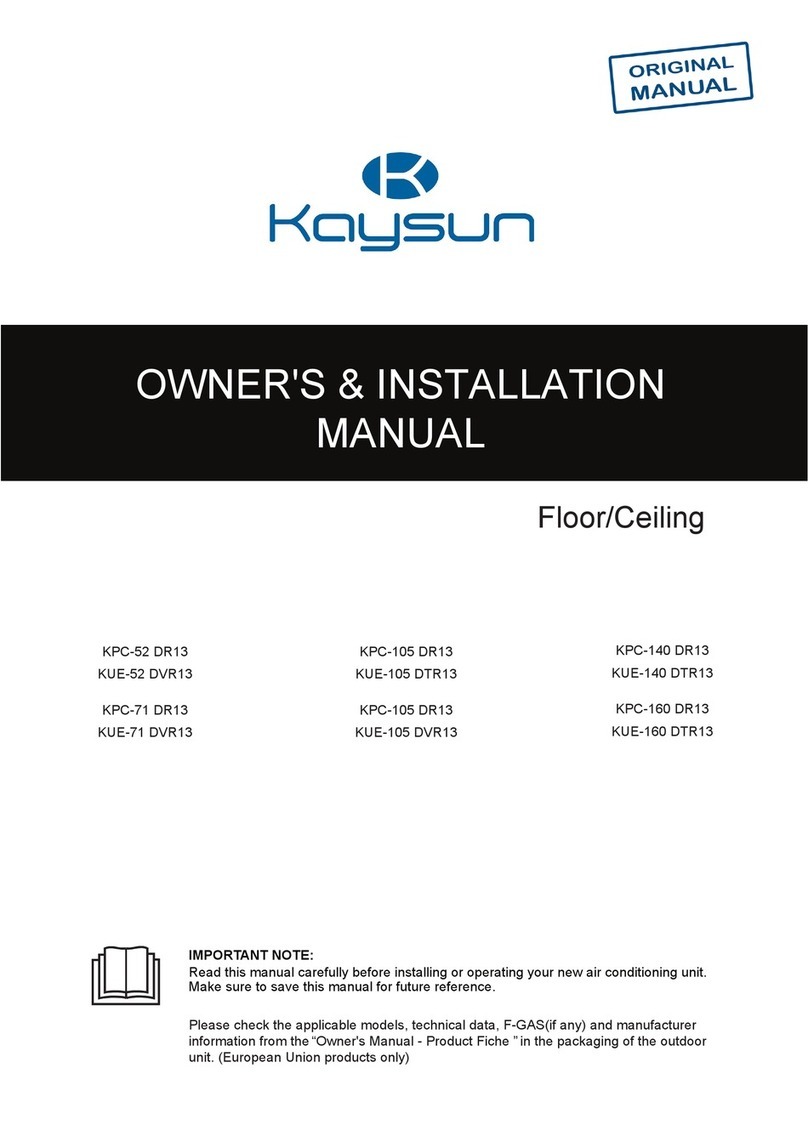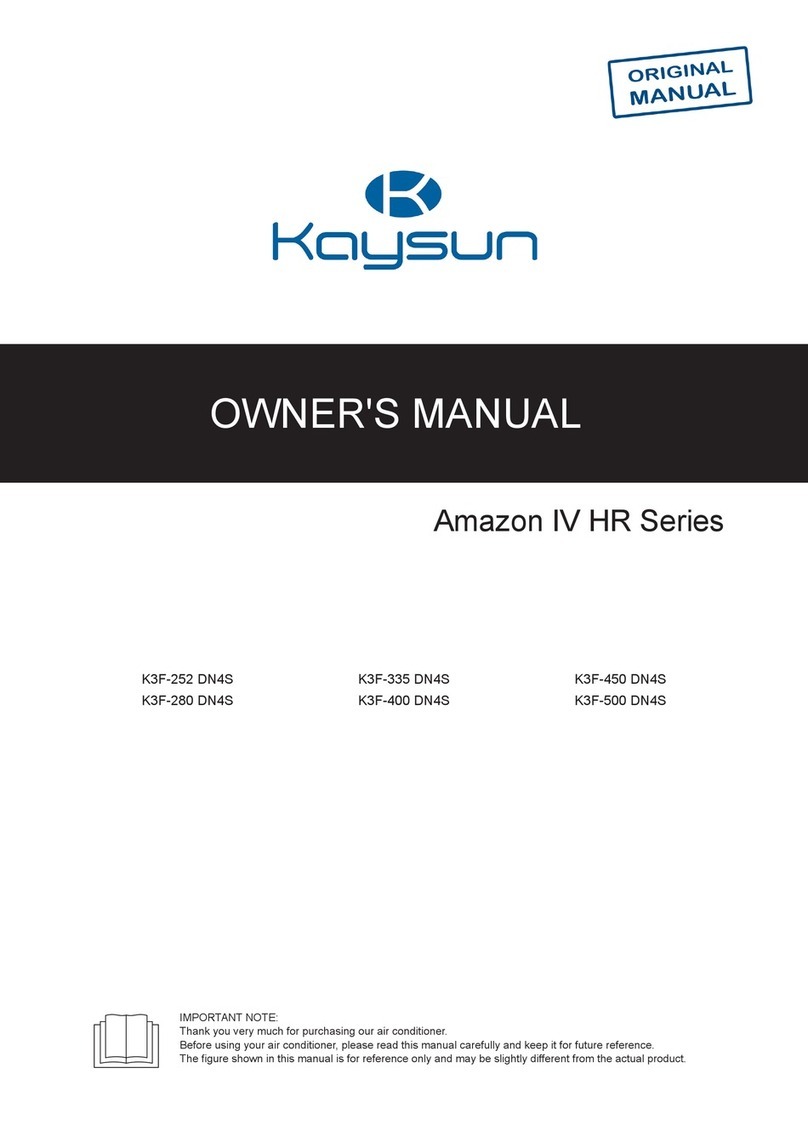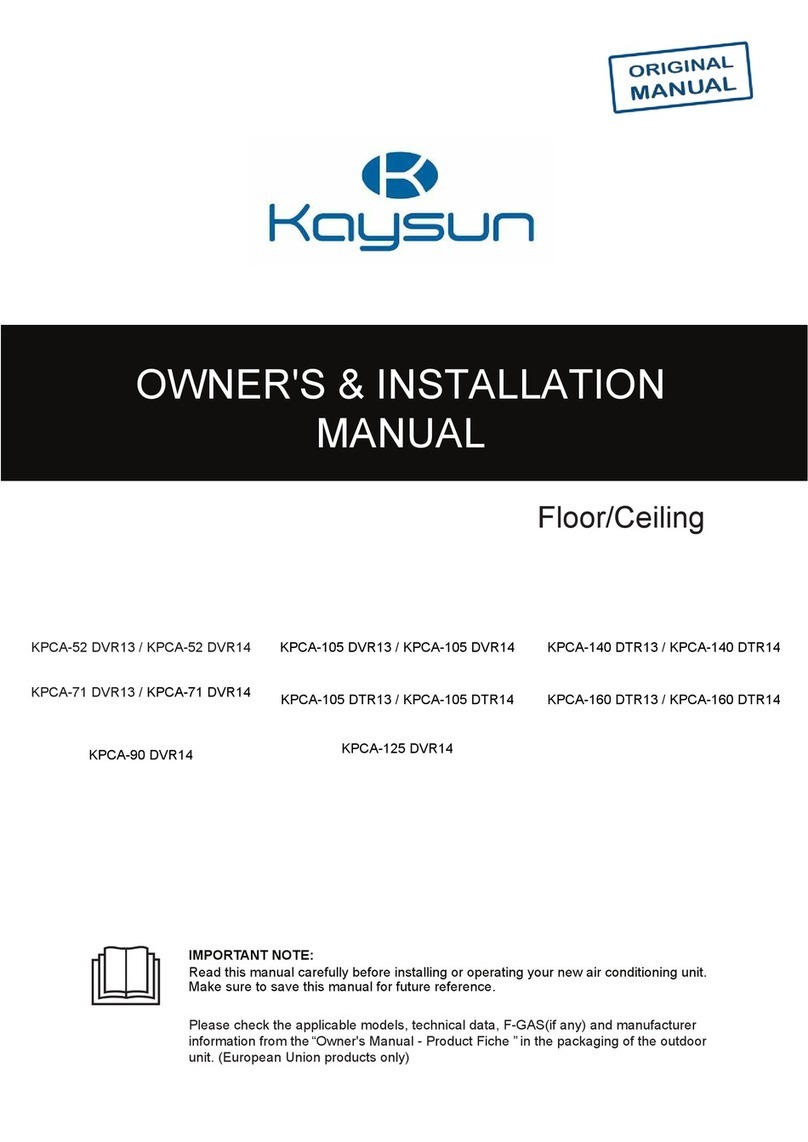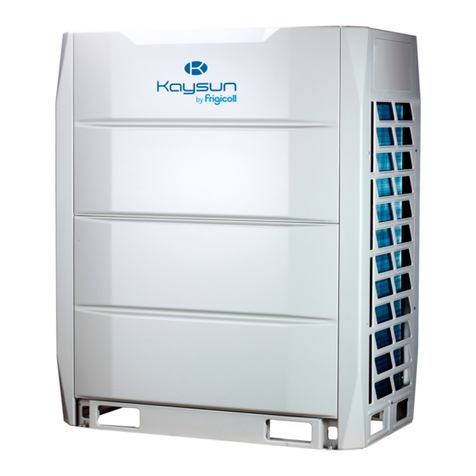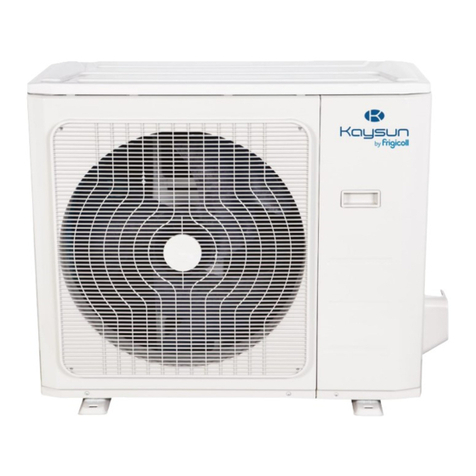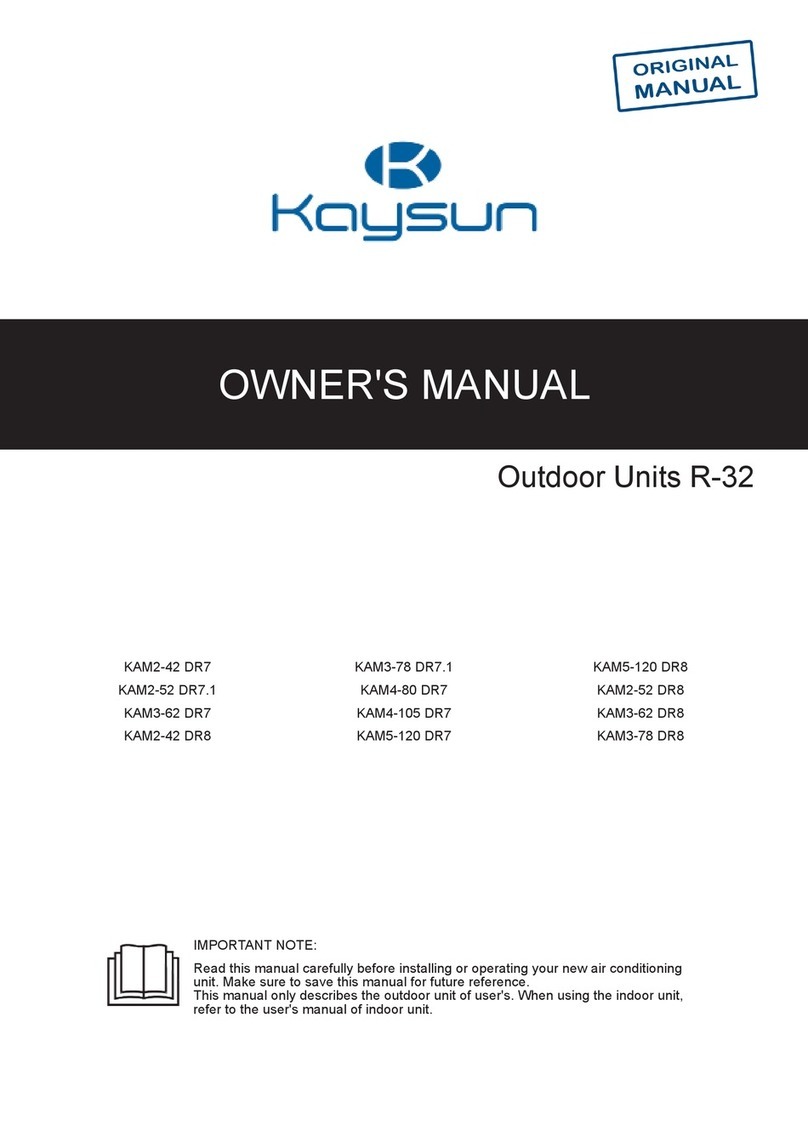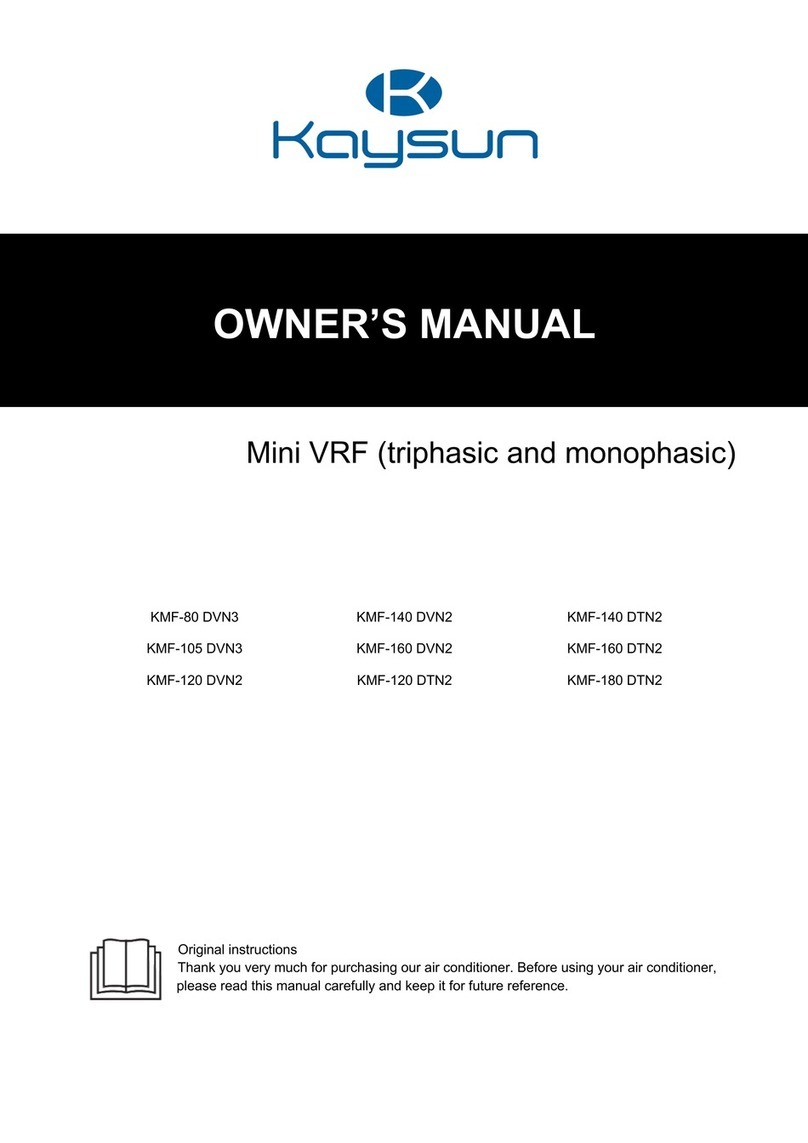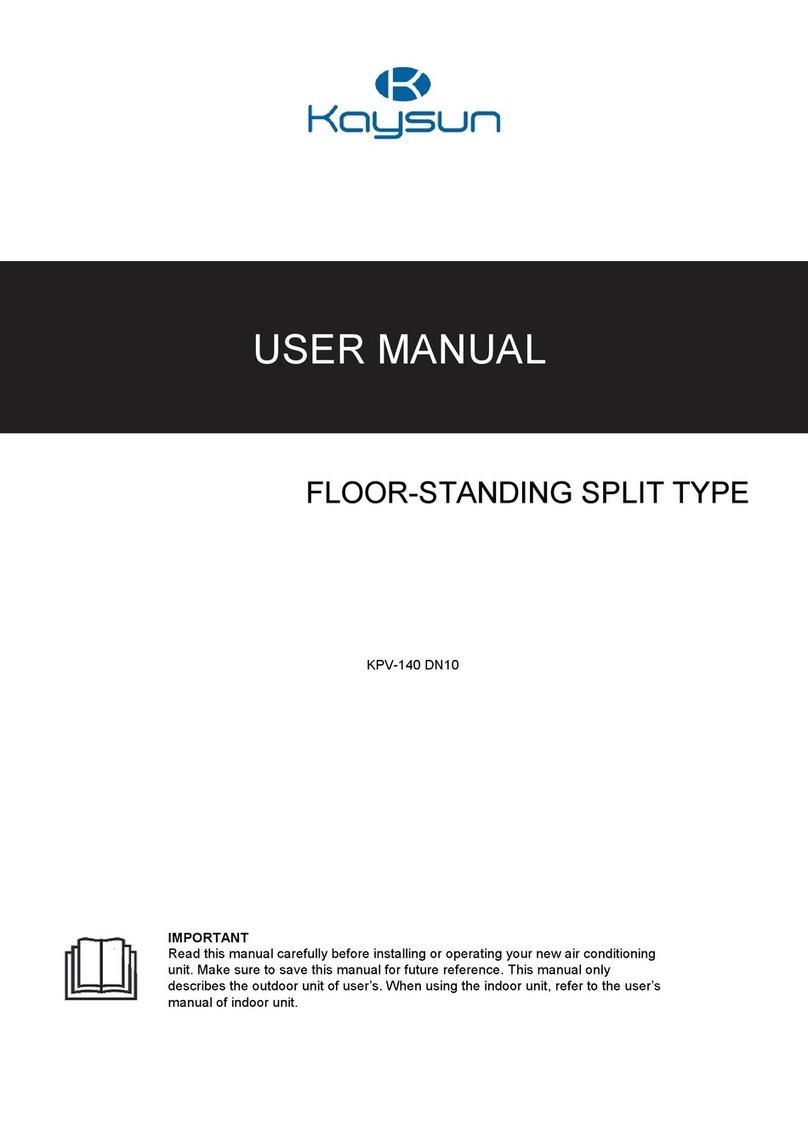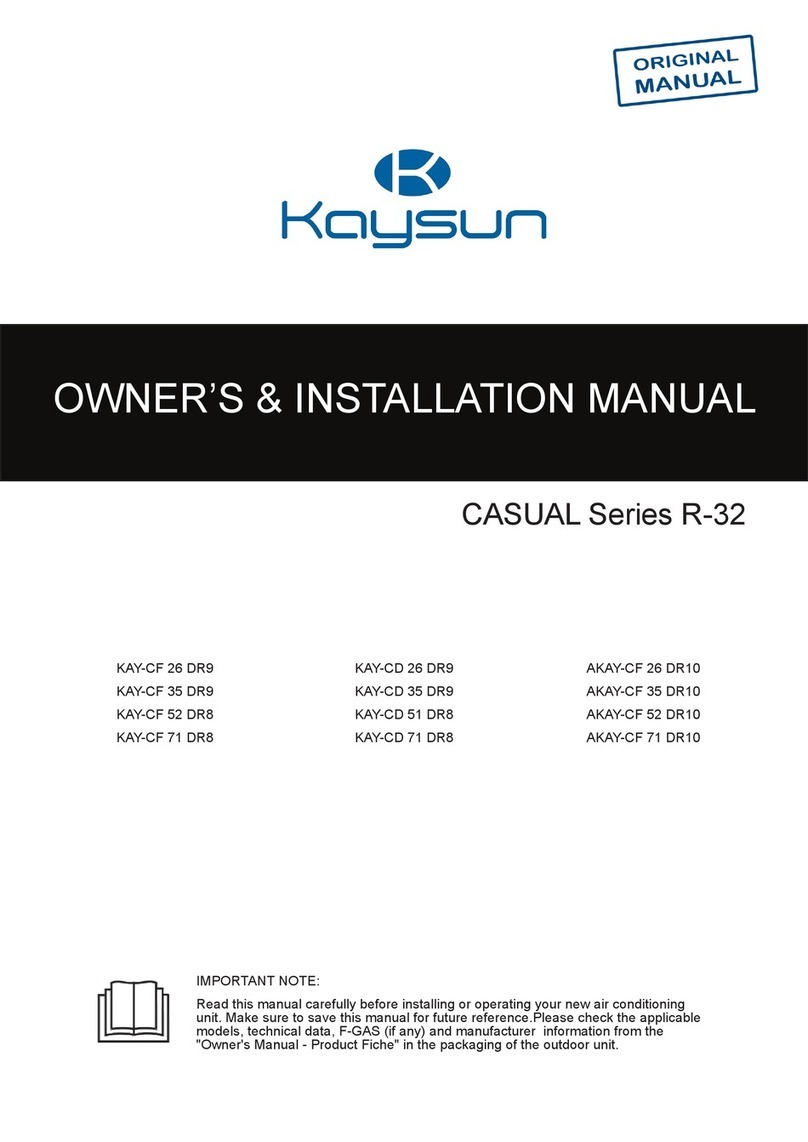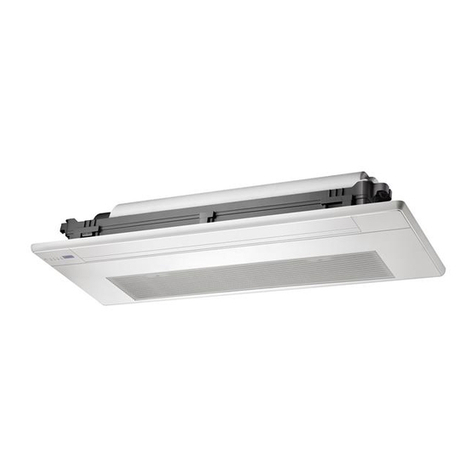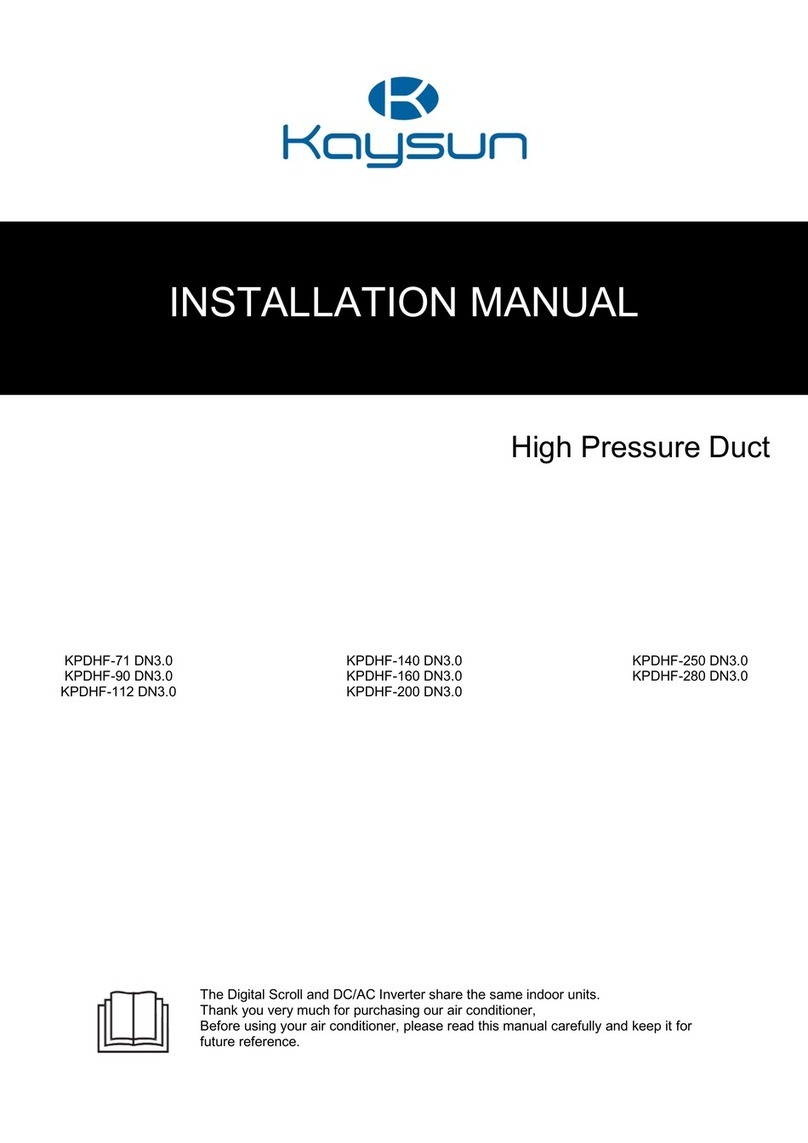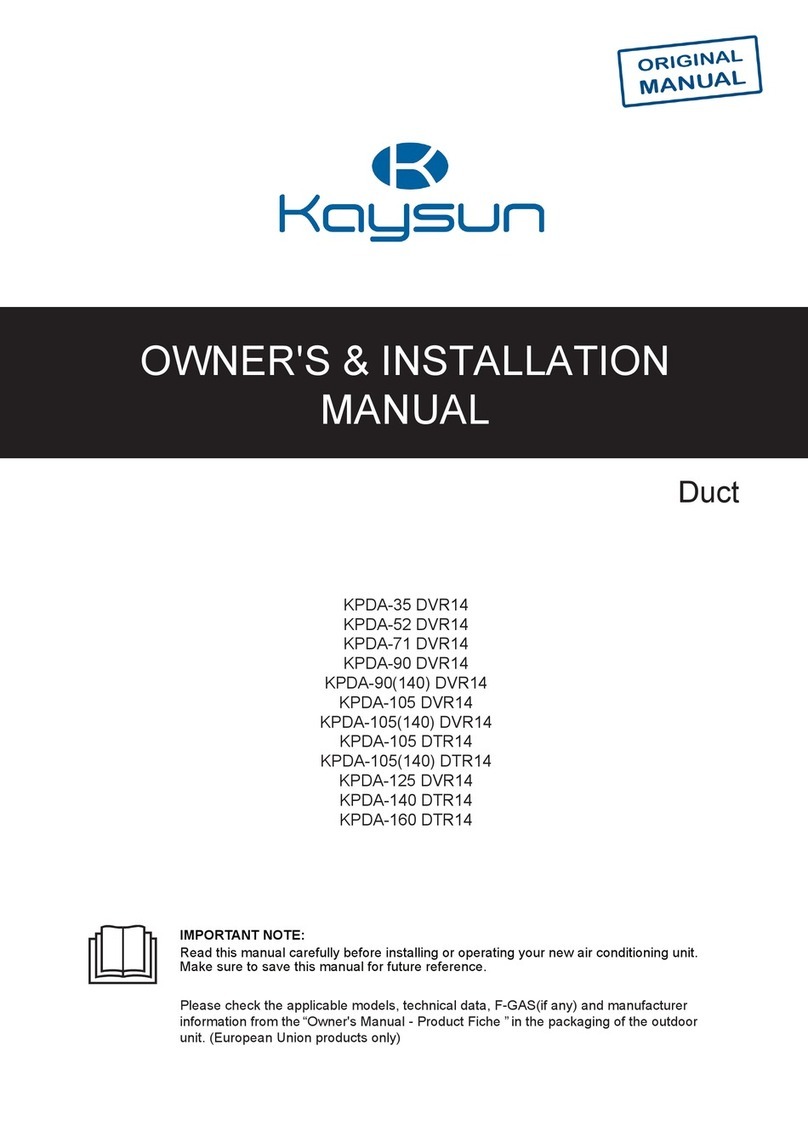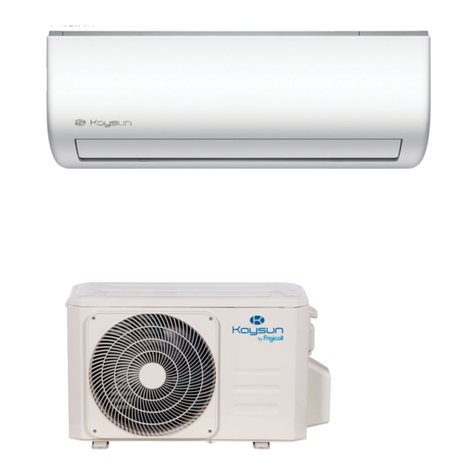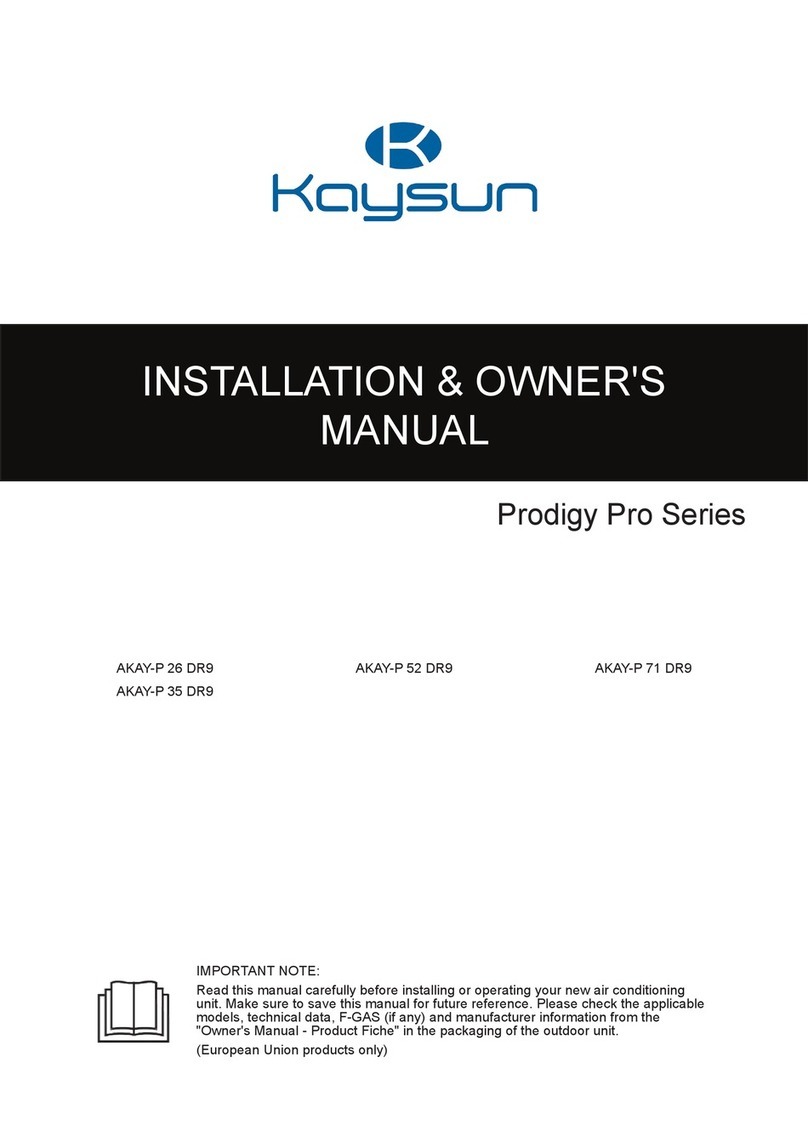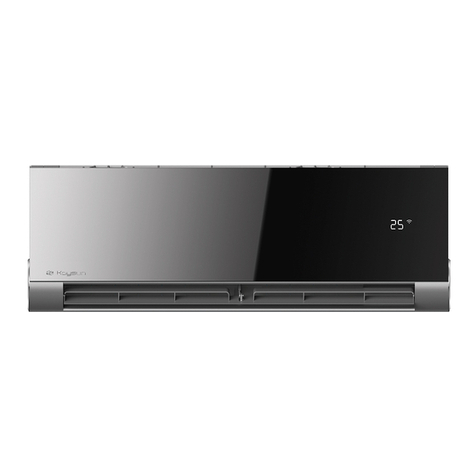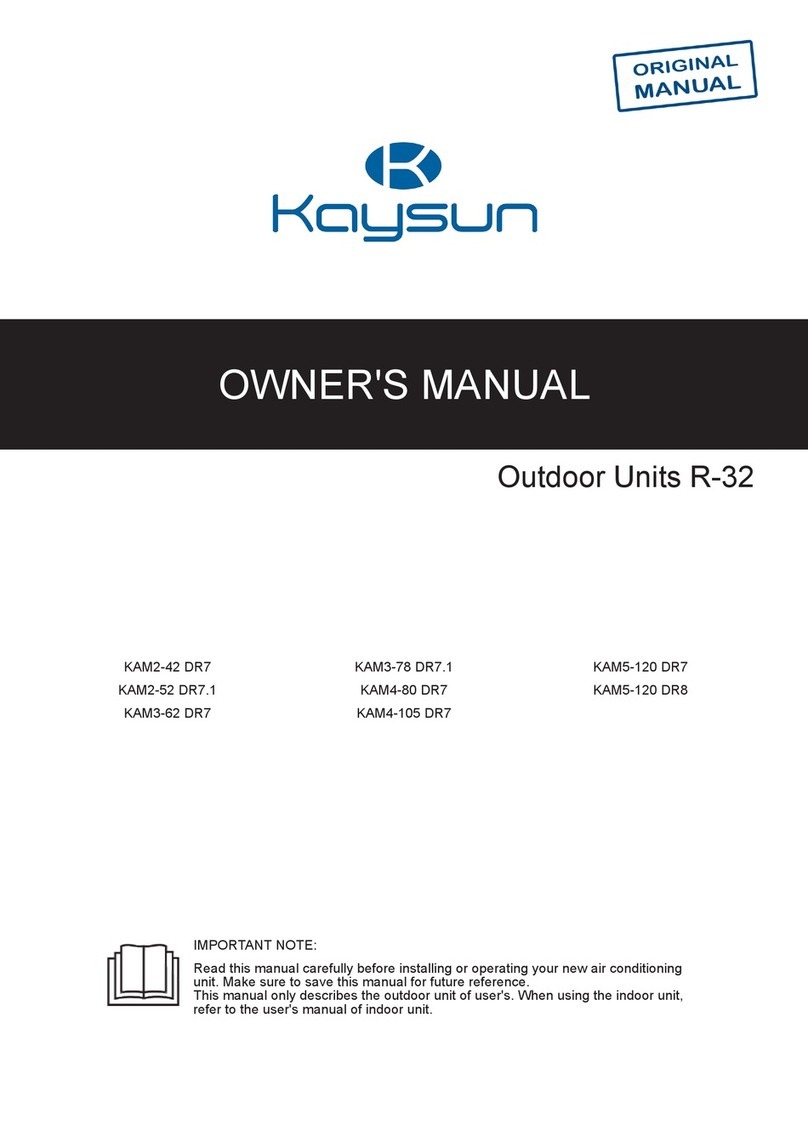
CONTENTS PAGE Install according to this installation instructions strictly.
If installation is defective, it will cause water leakage, electrical
shock fire.
PRECAUTIONS......................................................................... 1
CONSTRUCTION CHECKPOINTS .......................................... 2
ACCESSORIES ....................................................................... 3
MAIN UNIT INSTALLATION.................................................... 4
WATER SYSTEM INSTALLATION .......................................... 7
REFRIGERANT PIPE ……………….........................................12
ELECTRIC WIRING ………………............................................17
TRIAL RUN.............................................................................. 28
When installing the unit in a small room, take measures
against to keep refrigerant concentration from exceeding
allowable safety limits in the event of refrigerant leakage.
Contact the place of purchase for more information. Excessive
refrigerant in a closed ambient can lead to oxygen deficiency.
Use the attached accessories parts and specified parts for
installation.
Otherwise, it will cause the set to fall, water leakage, electrical
shock fire.
1. PRECAUTIONS
Install at a strong and firm location which is able to
withstand the set's weight.
If the strength is not enough or installation is not properly done,
the set will drop to cause injury.
Precautions before reading the Installation manual.
This Installation manual is for the main unit.
Refer to the indoor unit Installation manual for indoor parts
installation.
Please read the power source unit Installation manual to install
the power source unit.
Please refer to the refrigerant distributor Installation manual to
install the refrigerant distributor.
The safety precautions listed here are divided into two categories. In
either case, important safety information is listed which must be read
carefully.
The appliance shall be installed in accordance with
national wiring regulations
The appliance shall not be installed in the laundry.
Before obtaining access to terminals, all supply circuits
must be disconnected.
The appliance must be positioned so that the plug is
accessible.
The enclosure of the appliance shall be marked by word, or
by symbols, with the direction of the fluid flow.
For electrical work, follow the local national wiring
standard, regulation and this installation instructions. An
independent circuit and single outlet must be used.
If electrical circuit capacity is not enough or defect in electrical
work, it will cause electrical shock fire.
WARNING Use the specified cable and connect tightly and clamp the
cable so that no external force will be acted on the
Failure to observe a warning may result in serious injuries.
The appliance shall be installed in accordance with national
wiring regulations.
CAUTION
Failure to observe a caution may result in injury or damage
to the equipment.
After completing the installation, make sure that the unit operates
properly during the start-up operation. Please instruct the customer
on how to operate the unit and keep it trained. Also, inform customers
that they should store this Installation manual along with the owner's
terminal.
If connection or fixing is not perfect, it will cause heat-up or fire
at the connection.
Wiring routing must be properly arranged so that control
board cover is fixed properly.
If control board cover is not fixed perfectly, it will cause heat-up
at connection point of terminal, fire or electrical shock.
If the supply cord is damaged, it must be replaced by the
manufacture or its service agent or similarly qualified
person in order to avoid a hazard.
manual for future reference. An all-pole disconnection device which has at least 3mm
separation distance in all pole and a residual current
device (RCD)with the rating of above 10mA shall be
incorporated in the fixed wiring according to the national
WARNING
This air conditioner is a comfortable air conditioner, and it
must be installed at indoor, do not place it in the places
such as machine room, precise instruments,
food, plants, animals or vertu etc.
rule
When carrying out piping connection, take care not to let
air substances go into refrigeration cycle.
Otherwise, it will cause lower capacity, abnormal high pressure
in the refrigeration cycle, explosion and injury.
Be sure only trained and qualified service personnel to
install, repair or service the equipment.
Improper installation, repair, and maintenance may result in
electric shocks, short-circuit, leaks, fire or other damage to the
equipment.
Do not modify the length of the power supply cord or use
of extension cord, and do not share the single outlet with
other electrical appliances.
Otherwise, it will cause fire or electrical shock.


